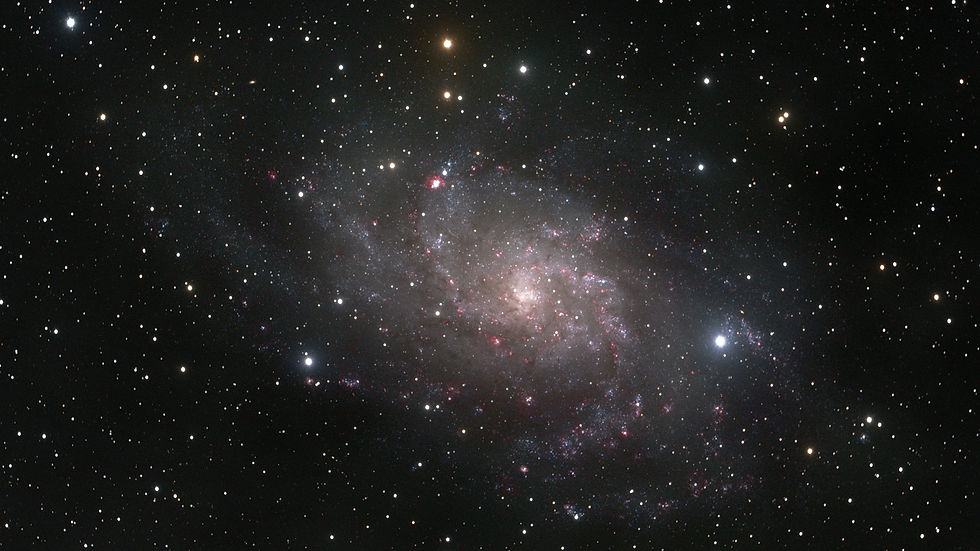
Messier 33 or the Triangulum Galaxy, a galaxy similar to our home Milky Way, composed of stars, gas and dust.
In a series of posts I will be studying the composition of the Milky Way, with the goal of better understanding the sources of the light from objects in the galaxy observed here on the surface of this planet we call Earth. I will focus on radiation that I can capture in my telescope –the visible spectrum.
Part 1: Composition of the Milky Way
The Milky Way galaxy is made up of the same material as the universe, more or less. Approximately 73% of the mass of the visible universe is in the form of Hydrogen. Helium makes up about 25% of the mass, and everything else (all other elements) represents only 2%. I refer to the visible universe, meaning that I am not considering dark matter or dark energy.
Of course, when we think about the Milky Way galaxy we often think about the “billions and billions of stars”, but in fact it is a complex blend of stars, planets, comets, gas clouds, rotten tomatoes, empty beer cans, mammals, etc. We humans are mostly composed of the element Oxygen, making us a bit special in the big picture. In our galaxy the combined mass of these interstellar clouds and other assorted items is believed to be quite large, 10 to 15% to the total amount of mass in the Milky Way.
The elements that make up a given star will typically mirror the universe’s distribution but there is some variation. Stars will have a composition close to that of the interstellar medium from which they were born. Some stars are very old, formed fairly soon after the big bang when the balance of elements was different – fewer heavy elements existed back then. This means that the oldest stars are composed of more Hydrogen and Helium and have less of the heavier elements.
By contrast the interstellar medium, the gas and dust that we see as nebulae, tends to have more of the heavier elements like Oxygen because these elements have been ejected over a few billion years into the interstellar medium by exploding stars. The elements in young stars will roughly match this because they were formed from clumps in the interstellar medium. Some of the heavier elements are in the form of Carbon, Nitrogen and Silicate dust, sometimes described as being like “cigarette smoke” –if anyone remembers what that is! The dust is only a small fraction (~1%) of the interstellar medium but it is an important part of the star formation process and is prominent in our views of nebulae.
To sum up, for the visible Milky Way Galaxy:
By object mass: ~85% Stars, ~15% Interstellar Medium (Of which ~99% Gas, ~1% Dust).
By Element: 73% Hydrogen, 25% Helium, 2% other stuff (known as "metals" to astronomers)
For more information about the image of M33, see the related blog post.

Comentarios